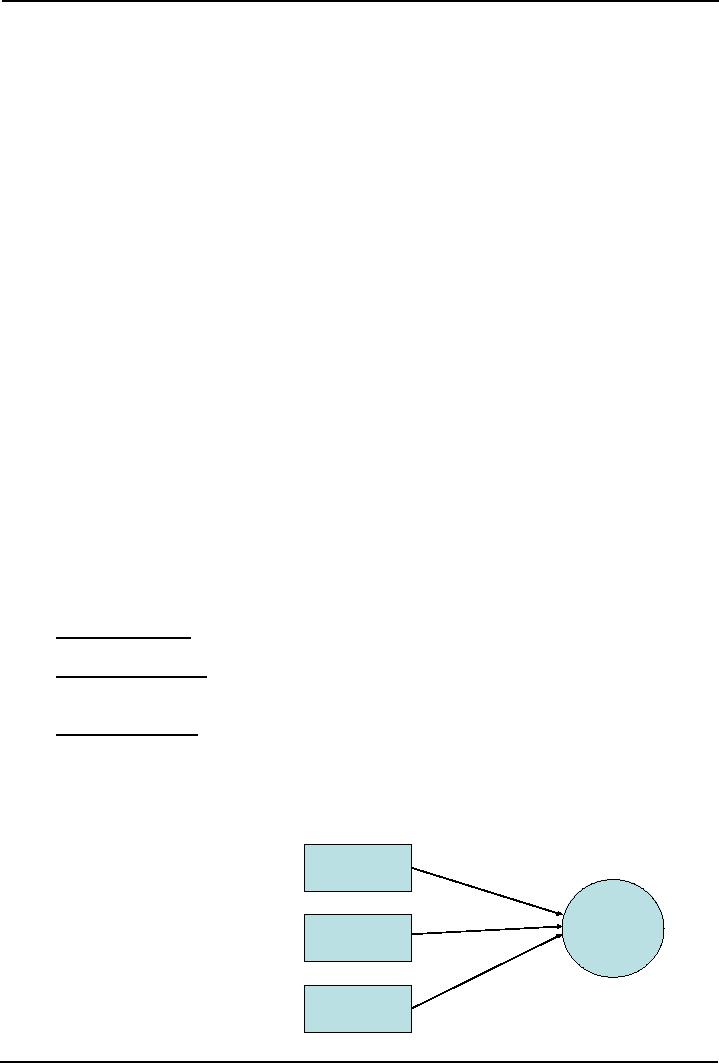 |

Social
Psychology (PSY403)
VU
Lesson
20
ATTITUDES
Aims
·
To
introduce the concept of attitudes,
components, and ways of
assessment.
Objectives
·
To
discuss definition of an attitude and
its components
·
To
describe direct and indirect
methods of assessing
attitudes.
Discussion
about new section "Evaluating
Persons and Relationships" of study in
Social Psychology
Since
with the study of Attitudes, a
new section is being started,
some discussion was carried
out
about
the main components of this section
"Evaluating persons and relationships".
This section will
comprise
on the general study of attitude
formation and change. This section
will also focus on
specific
attitudes
like negative attitudes of
prejudice and discrimination, and
positive attitudes of
interpersonal
attractions
and attachments. The section will
discuss causes of social intolerance
and different forms
of
prejudice.
Discussion will also be carried
out on how positive attractions
are formed.
What
is an Attitude?
·
A
positive or negative evaluation of an
object (Schuman, 1995), where an
attitude object is a
person,
thing, event, or
issue
·
Earliest
use of the term attitude
came
from theatre, described it as a body posture;
dates back to the
1800s;
later referred to as a "posture of
mind" than of body.
·
According
to Allport, attitude is the most
indispensable concept of social psychology.
He
maintained
that "Attitudes determine
for each individual what he
will see and hear, what he
will
think
and what he will do. To
borrow a phrase from
Willliam James, "they
engender meaning upon
the
world" (Allport,
1935, p. 806).
Three
components of Attitudes
Before
1990s attitudes were interpreted in
terms of their three components
(tricomponent). This
idea
was based on "ABC" information
namely:
·
Affective
component: the person's emotions
and affect towards the
object
·
Behavioral
component: how
person tends to act towards the
object; Attitudes are but
one
determinant
of behavior but not the only
one; conversely past
behavior also determines
attitudes.
·
Cognitive
component: consists of
thoughts and beliefs the person
has about the object.
Attitudes are
often
cognitively complex but
evaluative simple.
Because
all of these components may
not be present always, many
psychologists have moved to single
dimension
definition-evaluative.
Commonly
used words for T h r e e d if f e r e n t t y
p e s o f a t t i t u d e a n t e c e d e n t s
evaluating
objects are bad,
good,
dislike, hate, love,
etc.
B
e h a v io r a l
p
ro c e s s e s
However,
specialized terms are
also
employed to evaluate,
for
example,
attitude toward self
is
A
ttitu d e
A
ffe c tiv e
referred
to as self esteem,.
p
ro c e s s e s
Similarly
negative specific
attitudes
are prejudice
and
discrimination
whereas specific
C
o g n itiv e
positive
attitudes
are
p
ro c e s s e s
interpersonal
attractions and
80

Social
Psychology (PSY403)
VU
relationships.
Prejudice is an attitude toward
group, whereas interpersonal attractions
are for individuals.
Although
evaluative component is central to an
attitude, the other two dimensions
-behavior and beliefs-
can
also not be
overlooked.
Assessing
Attitudes
Direct
Assessment:
Usually
three methods are employed to
measure attitudes
directly:
1.
Likert (Summated Ratings)
scales:
What
is your opinion about
co-education at college
level?
-4
-3
-2
-1
0
+1
+2
+3
+4
Very
much opposed
Very
much in favour
2.
Semantic Differential Scales: Do you
feel about the taste of this
(any brand) coffee?
Unpleasant
______________________________________
Pleasant
3.
Latitude of Acceptance
-4
-3
-2
-1
0
+1
+2
+3
+4
All
options acceptable to the respondent are
encircled, while those not
acceptable are
encircled.
Indirect
Assessment
·
Social
desirability problem in direct
assessment led to indirect
assessment of attitudes.
·
Studies conducted
in 1930s and then in 1969
showed reduction in stereotypes of
White against
black
people. However, the evidence does
not show a reduction in prejudice
over time. This
artifact
thus
can be attributed to social desirability
factor.
·
Bogus
pipeline technique is used to
convince the respondents that the
experimenter has a
pipeline
into
the respondent's real attitudes
·
Bogus
pipeline techniques are effective in
getting people to admit that
they smoke or drink
too
much,
and engage in other unhealthy
behaviors
·
Recent
advances in electrophysiology may remove
the "bogus" from the bogus
pipeline and make
it
possible to detect attitudes directly.
For example, electromyographic recordings
can detect
minute
changes in these muscles accurately
reflecting a person's feelings and thus
can help detect
attitudes.
Reading
·
Franzoi,
S. (2003). Social
Psychology. Boston:
McGraw-Hill. Chapter 6.
·
Lord,
C.G. (1997). Social
Psychology. Orlando:
Harcourt Brace and Company. Chapter
6.
81
Table of Contents:
- INTRODUCTION TO SOCIAL PSYCHOLOGY:Readings, Main Elements of Definitions
- INTRODUCTION TO SOCIAL PSYCHOLOGY:Social Psychology and Sociology
- CONDUCTING RESEARCH IN SOCIAL PSYCHOLOGY:Scientific Method
- CONDUCTING RESEARCH IN SOCIAL PSYCHOLOGY:Evaluate Ethics
- CONDUCTING RESEARCH IN SOCIAL PSYCHOLOGY RESEARCH PROCESS, DESIGNS AND METHODS (CONTINUED)
- CONDUCTING RESEARCH IN SOCIAL PSYCHOLOGY OBSERVATIONAL METHOD
- CONDUCTING RESEARCH IN SOCIAL PSYCHOLOGY CORRELATIONAL METHOD:
- CONDUCTING RESEARCH IN SOCIAL PSYCHOLOGY EXPERIMENTAL METHOD
- THE SELF:Meta Analysis, THE INTERNET, BRAIN-IMAGING TECHNIQUES
- THE SELF (CONTINUED):Development of Self awareness, SELF REGULATION
- THE SELF (CONTINUE…….):Journal Activity, POSSIBLE HISTORICAL EFFECTS
- THE SELF (CONTINUE……….):SELF-SCHEMAS, SELF-COMPLEXITY
- PERSON PERCEPTION:Impression Formation, Facial Expressions
- PERSON PERCEPTION (CONTINUE…..):GENDER SOCIALIZATION, Integrating Impressions
- PERSON PERCEPTION: WHEN PERSON PERCEPTION IS MOST CHALLENGING
- ATTRIBUTION:The locus of causality, Stability & Controllability
- ATTRIBUTION ERRORS:Biases in Attribution, Cultural differences
- SOCIAL COGNITION:We are categorizing creatures, Developing Schemas
- SOCIAL COGNITION (CONTINUE…….):Counterfactual Thinking, Confirmation bias
- ATTITUDES:Affective component, Behavioral component, Cognitive component
- ATTITUDE FORMATION:Classical conditioning, Subliminal conditioning
- ATTITUDE AND BEHAVIOR:Theory of planned behavior, Attitude strength
- ATTITUDE CHANGE:Factors affecting dissonance, Likeability
- ATTITUDE CHANGE (CONTINUE……….):Attitudinal Inoculation, Audience Variables
- PREJUDICE AND DISCRIMINATION:Activity on Cognitive Dissonance, Categorization
- PREJUDICE AND DISCRIMINATION (CONTINUE……….):Religion, Stereotype threat
- REDUCING PREJUDICE AND DISCRIMINATION:The contact hypothesis
- INTERPERSONAL ATTRACTION:Reasons for affiliation, Theory of Social exchange
- INTERPERSONAL ATTRACTION (CONTINUE……..):Physical attractiveness
- INTIMATE RELATIONSHIPS:Applied Social Psychology Lab
- SOCIAL INFLUENCE:Attachment styles & Friendship, SOCIAL INTERACTIONS
- SOCIAL INFLUENCE (CONTINE………):Normative influence, Informational influence
- SOCIAL INFLUENCE (CONTINUE……):Crimes of Obedience, Predictions
- AGGRESSION:Identifying Aggression, Instrumental aggression
- AGGRESSION (CONTINUE……):The Cognitive-Neo-associationist Model
- REDUCING AGGRESSION:Punishment, Incompatible response strategy
- PROSOCIAL BEHAVIOR:Types of Helping, Reciprocal helping, Norm of responsibility
- PROSOCIAL BEHAVIOR (CONTINUE………):Bystander Intervention, Diffusion of responsibility
- GROUP BEHAVIOR:Applied Social Psychology Lab, Basic Features of Groups
- GROUP BEHAVIOR (CONTINUE…………):Social Loafing, Deindividuation
- up Decision GROUP BEHAVIOR (CONTINUE……….):GroProcess, Group Polarization
- INTERPERSONAL POWER: LEADERSHIP, The Situational Perspective, Information power
- SOCIAL PSYCHOLOGY APPLIED: SOCIAL PSYCHOLOGY IN COURT
- SOCIAL PSYCHOLOGY APPLIED: SOCIAL PSYCHOLOGY IN CLINIC
- FINAL REVIEW:Social Psychology and related fields, History, Social cognition